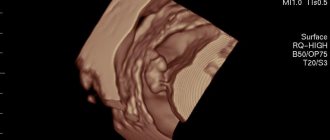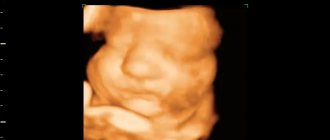Pregnancy with twins
The well-being of pregnant women who are carrying two babies under their hearts at once is not much different from the sensations experienced by the expectant mother of one child. However, experts recommend that women with twins be even more careful and prudent. And this is not surprising, because each fetus requires strength and resources for development, which they take from their mother. A woman, together with the supervising doctor, must provide them and herself with everything necessary without compromising their health.
How you feel
By the end of the 15th week of pregnancy, all manifestations of early toxicosis (if any) should finally pass. There comes a time when you will feel a surge of strength and vigor. However, due to changes in the body, you may be concerned about the phenomenon of varicose veins. The fact is that the growing uterus puts pressure on the central veins passing behind it. This makes it difficult for blood to move from the legs to the heart. Especially often, women who have a genetic predisposition to this disease suffer from varicose veins in the 14th – 15th week of pregnancy. To prevent illness and alleviate your condition, it is recommended to follow a few simple rules:
- Avoid high-heeled shoes;
- When working sedentarily, take a ten-minute break every hour and a half, during which you can walk up the stairs or go for a walk;
- During the day, give the veins relief several times - to do this, you need to lie down for a while with your legs elevated.
If you already had varicose veins before pregnancy, consult your doctor: he may recommend that you wear compression tights or knee socks.
In addition to problems with the venous system, the expectant mother may suffer from constipation in the 14th - 15th week of pregnancy. They are a consequence of the fact that the hormone progesterone relaxes the intestinal muscles. Diet will help minimize bowel irregularities: include fresh seasonal fruits and vegetables in your diet (they are very rich in fiber) and drink more water.
At 15 weeks of pregnancy, the development of alveoli and milk ducts continues in the breast. Some of them are already capable of producing colostrum, a precursor to milk in the form of a viscous yellowish liquid. You may even notice it when you squeeze the nipple. However, there is no need to specifically stimulate the release of colostrum: due to irritation of the nipples, the hormone oxytocin is released, which causes an increase in the tone of the uterus.
Changes in the body of a pregnant woman at 15 weeks
The development of pregnancy at week 15 introduces some unfavorable changes in the body of the expectant mother. During this period, pregnant women notice a deterioration in the condition of the skin, hair and nails, as well as crumbling teeth. This happens for the reason that all energy costs and nutrients from the mother’s body go to the development of the fetus. In the second trimester of pregnancy, the fetus continues to actively develop and grow; it requires large quantities of nutrients, vitamins and microelements, especially calcium and proteins.
Risk factors
The 15th week is not considered a critical period, and the likelihood of miscarriage is minimal. But at this time, isthmic-cervical insufficiency may appear for the first time. This is a pathological condition in which the obturator ability of the cervix is impaired. As a result, the membranes of the fetus fall inside the canal, where its walls can become infected or even rupture.
Suspicion of isthmic-cervical insufficiency may appear with the following symptoms:
- Pain in the lower back and lower abdomen;
- Feeling of fullness in the vagina;
- Increased volume of discharge from the genital tract.
Risk groups include pregnant women with twins, women with hyperandrogenemia (increased levels of male sex hormones in the blood) and those who have undergone cervical surgery in the past.
If by 14–15 weeks of pregnancy you experience anything similar to the symptoms listed above, you should immediately consult a doctor. Isthmic-cervical insufficiency in the early stages is successfully treated.
Tests and studies during pregnancy
ultrasound (ultrasound examination) is 12-14 weeks after the first day of the last menstruation.
Determination of gestational age, number of fetuses, exclusion of malformations of the nervous system, abdominal organs, fetal limbs. Blood test for AIDS (HIV), syphilis (RW), hepatitis B - when registering for pregnancy (antenatal clinic, specialized medical center, advisory clinic at a maternity hospital, etc.). These diseases can complicate the course of pregnancy and require a special approach to patient management.
Analysis for blood group and Rh factor - when registering for pregnancy. If there is a risk of Rh conflict (if the woman has a negative Rh factor and the husband has a positive one), pregnancy requires special monitoring.
General and biochemical blood test, blood sugar test - when registering for pregnancy. They give an idea of the general health of the pregnant woman and possible chronic diseases.
General urine test - when registering for pregnancy, then before each visit to the doctor. Indicates the quality of kidney function.
Vaginal smear - when registering for pregnancy. Assessment of microbial flora, exclusion of urogenital infections.
Tests for urogenital infections - according to indications .
Hormone analysis - according to indications .
Visiting a doctor monitoring pregnancy: once a month. Weighing, measuring blood pressure, measuring the height of the uterine fundus, listening to the fetal heartbeat.
Visiting specialists: therapist, ophthalmologist, otolaryngologist, dentist.
ECG (electrocardiogram).
Recommendations
- For this period, the recommendations of previous weeks are relevant: balance your diet (the diet should contain carbohydrates, proteins and fats), wear comfortable clothes made from natural materials, do not avoid moderate physical activity - they will allow you to stay in shape and prepare your body for childbirth;
- When going to bed, lie on your side. The 15th week of pregnancy is the time to purchase a special pillow for expectant mothers: it will relieve the strain on tired muscles of the back, neck, legs and help you completely relax;
- “Charge yourself” with positive emotions: meet with friends, spend time on your hobbies, read interesting books, listen to your favorite music and watch good films. Try not to get nervous over trifles. And be sure to talk to your baby: a baby at 15 weeks of pregnancy is already able to hear you.
Helpful advice for an expectant mother: stay physically active
Surely you are well aware that fresh air, nature, walks, and physical exercise are at the same time with you in your desire to conceive a child.
Swimming, water aerobics, yoga, and belly dancing help stimulate the sex glands, strengthen the pelvic organs, and promote the release of hormones. But most often, the benefits of physical exercise (strengthening muscles, joints, ligaments, helping to avoid stretch marks, prevent tears during childbirth, etc.) are shown from the point of view of the expectant mother. It is clear that the mother needs muscle tone to cope with the increasing load on the body. It is also known that cycling, running, horse riding, as well as water skiing, mountaineering, and scuba diving can be dangerous for bearing a Baby. But why does the Baby himself need activity before birth? The fact is that the movement and development of a child are inextricably linked. From the very first moments of life, that is, immediately after conception, the human body undergoes changes that require ideal conditions, and some of the most important are oxygen, nutrients and the absence of toxins in the mother’s body.
The baby begins to make movements very early: already at 7.5 weeks he reacts to touching the skin in the lip area, and at 8 weeks - to any part of the body; at 9 weeks he swallows amniotic fluid, his excretory system functions, urine is formed and excreted; at 10 weeks, muscle activity appears, opening of the mouth is observed, and at 10.5 weeks, flexion of the fingers; starting from 10-11 weeks, the baby actively moves in the amniotic fluid, touches the wall of the amniotic sac, and can change the trajectory of its movement; at 11-12 weeks there is already a grasping reflex, and at 13 - a sucking reflex. In addition, from the 3rd week, the Baby’s heart begins to beat, and his brain also shows activity quite early. The baby is developing at a gigantic pace! And he needs your support, and in this case, the mother’s physical activity, oxygen and healthy metabolic processes in her body.
Discharge from the genital tract
Homogeneous consistency, moderate, light discharge indicates the cleanliness of the vagina and a normal pregnancy. If you have more abundant discharge, you should not be afraid, this is the work of estrogen. But if atypical discharge appears, for example, purulent or flaky, with an unpleasant odor, it is better to go to see a doctor.
The presence of green-gray, yellow, flaky, curdled or foamy discharge, accompanied by discomfort, indicates the development of an infection. Any infection can get to the fetus and, accordingly, provoke disturbances in its development, so you should start treatment recommended by your doctor immediately.
The reason for urgently seeking help is bloody discharge, accompanied by nagging pain in the abdomen, this indicates increased tone of the uterus, which can lead to miscarriage.
Interesting Facts
| Options | Indications |
| Time from conception | 13 weeks |
| Period by month | 15 weeks |
| What month | 4 |
| Dimensions and weight of the fetus | 100-120 mm, 50-70 g |
| Uterus dimensions | Protrudes from the womb |
Your baby is the size of
Orange
100-120mm Size
50-70 g Weight
The 15th obstetric week of pregnancy, or the 13th if you count from conception, is a time of relative calm for the expectant mother, who has already gotten used to her new position. She no longer suffers from constant nausea and fatigue. In the second trimester, a lot of strength and energy appears. The baby continues to grow and develop, and very soon the woman will even be able to feel his movements.
Good to know
Service diplomacy, or How to announce pregnancy at work
Massage, gymnastics and homemade masks for the neck and chest during pregnancy
Dentist advice for pregnant and lactating women
Pregnancy and teeth: how to save? 5 questions for the dentist
Is it possible for pregnant women to have their teeth treated under anesthesia and 5 more questions?
Can a pregnant woman have her teeth x-rayed?
Is it possible to do vacuum massage and wraps during pregnancy?
Why do pregnant women need multivitamins?
What foods contain vitamins that a pregnant woman needs?
All texts for pages about mother and baby were kindly provided by RAMA Publishing - these are chapters from the book by Svetlana Klaas “Your Favorite Little Man from Conception to Birth”, reviewer Irina Nikolaevna Kononova, Candidate of Medical Sciences, Associate Professor of the Department of Obstetrics and Gynecology of the Ural State Medical Academy (Ekaterinburg).
13,14,15,16 weeks of pregnancy: what happens, development of pregnancy and fetus
- home
- Services and prices
- Services and prices
- About Us
- Doctors
- Schedule and appointments
- Reviews
- Doctor training
- Clinic addresses
- Blog
- CIropedia
Week by week 13 - 16th weeks of pregnancy Elena Gevorkova Obstetrician-gynecologist, Moscow
Week 13
BABY
The length of the fetus is 6-7 cm at the beginning of the week, reaching 10 cm by the end. The fetus weighs about 20-30 g at this stage.
The countdown to the second trimester of pregnancy begins at the 13th week. From this period, intensive growth of the fetus occurs due to the lengthening of the arms and legs. The proportions of the body change, and the head is no longer as large in relation to the body as before. The formation of fingers and toes continues. The baby is already reaching his finger to his mouth, and often on an ultrasound you can see that the baby’s thumb is in the mouth. This is how a very important reflex manifests itself - sucking, which the child will need after birth.
Intensive growth of muscle tissue begins, especially in the area of the fetal limbs. The activity of the fetus increases significantly, it makes smoother movements, but the woman still feels them, since the fetus is in the uterine cavity in a free position and practically does not come into contact with its walls.
A remarkable fact is the completion of the formation of all 20 baby teeth. They are located under the dense mucous membrane of the upper and lower jaws of the fetus.
The gastrointestinal tract develops intensively, the intestines fit into loops, completely filling the abdominal cavity. The inner surface of the intestine (mucosa) forms special villi that line the entire area of the intestine. After the baby is born, these villi will play a very important role in digestion, absorbing nutrients from the intestinal cavity. The intestines perform wave-like (peristaltic) movements, as a result of which amniotic fluid swallowed by the fetus passes through it. They do not contain any nutrients, and their transport through the intestines is only a stimulus for the formation of the muscular wall of the intestines, preparing for postpartum life.
Future mom
The beginning of the 13th week is marked by the fact that pregnant women feel much better and finally have the opportunity to feel the full range of positive emotions associated with the period of bearing a baby. Toxicosis, malaise, and drowsiness recede. The emotional background changes, the woman becomes calmer and less irritable. This is due to more stable hormonal levels and the fact that the critical stages of pregnancy are experienced safely.
At this stage, the shape of the abdomen begins to change for most expectant mothers. As a rule, the changes are invisible to others, but pregnant women clearly notice the appearance of a rounded tummy and discomfort when wearing previously familiar things. This requires updating your wardrobe and choosing more comfortable clothes.
Week 14
BABY
The fruit is up to 13 cm long and weighs 40-45 g.
The appearance of the fetus changes due to the distinct formation of the face. The cheeks are rounded, the eyebrows are defined, and the bridge of the nose becomes more pronounced. The baby makes distinct movements - holding on to the umbilical cord, feeling his face and tummy. The head and body are covered with embryonic down, which fits tightly to the skin of the fetus. It performs a protective function by retaining a special lubricant located on the entire surface of the skin, which during childbirth will allow the baby to smoothly slide along the mother’s birth canal. Later, the thin, almost transparent germinal fluff will be replaced by thicker hairs.
During this period, important events occur regarding the fetal respiratory system. The intensive development of the muscular system concerns not only the motor muscles of the arms and legs, but also the muscles of the respiratory system. The fetus makes rhythmic and intense movements that imitate breathing. Such “training” is very important, since immediately after birth the child must take his first breath, which requires muscle effort and the ability of the muscles to obey signals that come from the brain. The glottis is partially closed, which allows a small amount of amniotic fluid to enter the lungs during “inhalation,” but with subsequent intense “exhalation,” it is pushed back out. This flushing promotes optimal maturation of lung tissue.
Noticeable changes are observed in the structure of the fetal genital organs. In girls, the ovaries move from the abdominal cavity to the pelvic cavity. In boys, the prostate gland (prostate) is intensively formed. The structure of the external genitalia is clearly differentiated into male and female genitalia, however, with ultrasound examination at this stage it is not always possible to reliably determine the sex of the fetus.
Important events occur in the organs of the endocrine system. The intensive functioning of the pancreas begins, the production of insulin occurs - the hormone responsible for the metabolism of glucose in the body. From the 14th week, the pituitary gland begins to function - the “boss” of all other glands, which controls their interaction and is responsible for growth processes. The pituitary gland is tiny in size and is located in the most protected part of the body - in the thickness of the brain, surrounded by the bones of the skull.
Future mom
The intensive growth of the uterus continues, and from this time it becomes possible to independently palpate the fundus of the uterus - its uppermost part - through the anterior abdominal wall; its upper edge is 10-15 cm above the pubis. From this period, the use of special skin care products for pregnant women is recommended. The skin of the abdomen is not yet stretched, but certain changes are already occurring in it, and it is important to use cosmetics - creams, lotions, oils that moisturize the skin.
Skin stretch marks during pregnancy (striae) appear due to ruptures of connective tissue fibers (microcracks). Changes in hormonal levels in expectant mothers reduce the elasticity and firmness of the skin, and even a slight weight gain, as well as redistribution of the subcutaneous layer of fat and swelling lead to natural stretching of the skin causing damage and the appearance of stretch marks.
The use of special cosmetics increases tissue elasticity and fills cells with moisture; in this case, when the skin is stretched, microtraumas will occur less frequently.
Week 15
BABY
By the end of the 15th week, the length of the fetus is 14-15 cm, and the weight is about 50-70 g. The growth of the limbs continues, outstripping the size of the head due to the intensive development of the bones of the arms and legs. Fetal movements are very active; he manages to repeatedly change his position in the uterus in a few minutes. Fingers and toes are fully formed. The fetus often bends its arms at the elbows and wrists, and actively clenches its fingers into a fist. The skin of the fingertips acquires a unique striation - a unique skin pattern. Nail formation begins.
At this stage of pregnancy, the fetal cardiovascular system improves. The fetal heartbeat is twice as fast as the mother's pulse (its norm is 140-160 beats per minute). The tiny heart works very intensively, pumping up to 20 liters of blood per day. The circulatory system of the fetus is improved: arteries and veins actively grow, connecting into complexes. At this stage, every organ - heart, brain, lungs, intestines, etc. - acquires its own vascular systems (arteries and veins). A dense network of blood vessels shines through the thin skin of the fetus, which is why the fruit is not the usual pink color, but red.
The formation of the nervous system goes through very important stages. The brain increases in mass, its convolutions and grooves deepen. Bones, muscles and all internal organs are intertwined with nerve fibers. A stable connection is formed between the brain (central nervous system) and the periphery. Impulses pass not only from the brain to the organs, but also in the opposite direction - this is how a very important “feedback” system is born.
By the 15th week, the source of blood cell production changes. If up to this point erythrocytes (red blood cells) were produced by the liver and yolk sac, then from the 15th week this function is taken over by the red bone marrow, which is located inside the bones.
From this period it becomes possible to determine the blood type and Rh factor of the fetus. Of course, the group and Rh are predetermined at the moment of conception, when the fusion of the parents’ chromosomes occurs, but the implementation of this information (the formation of special antigen proteins on the surface of red blood cells) occurs at this stage.
Future mom
The pregnant woman's belly continues to increase in size, at this stage its growth occurs quite smoothly. The uterus has a round shape, its bottom can be felt 15-20 cm above the pubis.
Skin pigmentation may appear both on the abdomen and on any other part of the body - arms, legs, face, chest, back of the expectant mother. As a rule, on the stomach this manifests itself as a brown line stretching from the pubis to the navel, or separately located spots of irregular shape. Skin pigmentation is associated with intensive production of melanin pigment and its deposition in the skin due to changes in hormonal levels, and occasionally due to a lack of vitamins. The appearance of age spots should not be accompanied by feelings of discomfort, redness, or swelling of the skin. If something like this happens, you should tell your doctor, as this could be a sign of an allergic reaction or a skin disease (dermatosis of pregnancy). The color of the line or spots can vary from light beige to dark brown. As a rule, these phenomena disappear on their own after childbirth. You should not use whitening creams without consulting your doctor: it may be unsafe for your baby.
Week 16
BABY
The fetus develops facial muscles, and he begins to train them - he frowns, opens and closes his mouth. The baby opens his eyes for the first time, which were previously tightly closed, and learns to blink. Eyebrows and eyelashes are represented by thin vellus hairs. The ears are already in their usual place, whereas before this period they were located quite low - at neck level. At this stage, the inner ear is not yet able to hear, but the fetus’ reaction to loud sounds is clearly visible. This is due to a special type of perception of sounds - bone conduction; the fetus seems to “hear” with the dense parts of its body - the bones.
The fetus has already formed all the bones and joints. But the bones are still very soft, and the process of strengthening (ossification) will continue not only throughout pregnancy, but also after the birth of the child until puberty.
At 16 weeks, the external genitalia are already clearly visualized, and with an ultrasound examination, the baby’s gender can be determined almost accurately.
Intensive work of the fetal kidneys is noted. From this period, the kidneys take on part of the excretory function, somewhat reducing the load on the placenta. During the day, the fetus swallows about 300-500 ml of amniotic fluid, which passes through the kidneys and is converted into urine. The fetus secretes urine every hour in small portions into the amniotic fluid through the formed urethra.
Future mom
The general well-being of pregnant women, as a rule, improves significantly. Appetite normalizes, gradual weight gain begins; by this moment it should not exceed 2.5-3 kg.
The growth of the abdomen at this stage of pregnancy is associated both with the development of the fetus and with a more intense accumulation of amniotic fluid. The belly protrudes quite noticeably, but does not restrict the pregnant woman’s movements and does not give her a feeling of discomfort. And although the size of the belly is small, nevertheless, the time comes to change some of your habits in connection with its growth. This applies to the choice of body position during sleep. It is not recommended to sleep on your stomach or back. In the first case, this may be uncomfortable for the baby and disrupt blood flow in the uterus. In the second, the uterus puts pressure on large veins, which impairs the outflow of blood, can provoke cramps, swelling of the legs and aggravate varicose veins. It is optimal to sleep on your side: this position is most comfortable for both mother and baby.
How high is the risk of a frozen pregnancy or miscarriage at this stage?
The risk of a frozen pregnancy at 15 weeks is significantly reduced, but the risk of miscarriage remains at any stage depending on the woman’s physical condition, pregnancy complications, as well as the history of previous pregnancies and births in the past, so everything here is quite individual, our expert believes.
Hypertension in the expectant mother can have an adverse effect on pregnancy. In addition, the risk of miscarriage increases significantly if you have diabetes mellitus, or if a woman has suffered a severe viral or bacterial infection and was not treated before pregnancy.
Proper nutrition
Since the active growth and development of the fetus is still ongoing, the mother’s diet should be varied enough to provide the baby with all the necessary building materials. This is a bad time for diets and a monotonous menu - if the baby does not receive all the components necessary for growth, his organs may develop incorrectly, and in the future his health will not be the best. Therefore, pay special attention to menu planning.
The expectant mother's diet should contain enough protein, healthy fats and carbohydrates. Eat lean meat, sea fish, local vegetables and fruits. Don't forget about cereals, whole grain bread and dairy products.
Your doctor will advise you on which vitamin and mineral supplements to include in your diet. Be careful when taking medications - you should not self-medicate; you should consult a doctor about all medications (and even vitamins) you take.
Is it worthwhile to engage in aesthetic education of the unborn baby at 15 weeks?
Listening to pleasant music, reading books or just having quiet conversations is extremely beneficial for a child's development.
“After all, you become a mother from the very moment of conception, so in my understanding, all the good things that you can demonstrate to your baby - classical music, contemplation of beauty - will help him become a harmonious, calm and full-fledged person,” our expert is convinced. “Therefore, dear expectant mothers, please receive positive emotions during pregnancy, this is very important.”
It is also important to note that at this stage the baby begins to distinguish voices, so doctors recommend not only the expectant mother, but also the father, to start talking to the child. This contributes to the formation of a favorable psycho-emotional connection.
Beauty and accessories
Is it possible to dye your hair during pregnancy? This question is asked by many pregnant women. After all, you really want to look beautiful and well-groomed! And if we are talking about a possible visit to a photo studio, then even more so. Recent studies do not allow us to say unequivocally about the negative impact of the dyeing process on the health of the fetus. In any case, we should not forget that the chemicals invariably contained in hair dyes can now cause severe allergies. This is despite the fact that you could previously use them without problems. Highlighting and coloring are more suitable for a pregnant woman - they do not affect the hair roots. Choose natural dyes (chamomile decoction, henna, basma, oak bark) or light tint balms.










